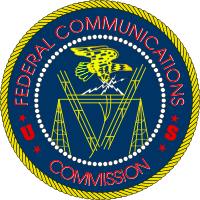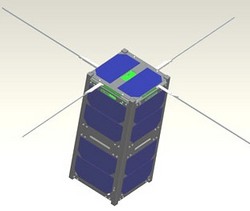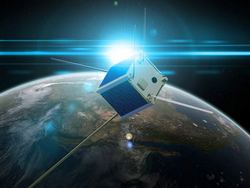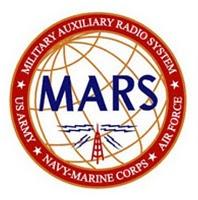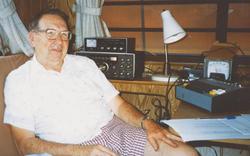 August 22, 2013 John E. Ross, KD8IDJ, Editor
| ||||||||||||
Pacificon 2013 - October 11-13 Note: This week's ARRL Letter omitted an announcement concerning the ARRL Pacific Division Convention (Pacificon). We are resending this edition to correct the oversight. The ARRL Pacific Division Convention -- Pacificon 2013 -- is October 11-13 at the Santa Clara, California, Marriott. Registration is now underway. Pacificon 2013 is sponsored by the Mount Diablo Amateur Radio Club (MDARC). This year's program includes a broad selection of presentations and forums covering topics of interest for all segments of the Amateur Radio community, from youth education, operating, public service, technical (SDRs, homebrewing and more), DXCC, MARS, and license preparation and testing. Among the featured presentations will be Friday's Antenna Seminar, conducted by Paul Howes, WA6GYY, with an outstanding lineup of speakers (there is a $15 charge, and Antenna Seminar tickets must be purchased in advance). Pacificon 2013 is looking for additional forum presenters. For more information on Pacificon 2013, contact Misa Siemons, KJ6BUE, or visit the Pacificon 2013 website. Talk-in will be on 147.060 MHz+ (CTCSS 100 Hz). Regulatory: Vanity Call Sign Fee Goes Up August 23! The new FCC regulatory fee of $16.10 to apply for an Amateur Radio vanity call sign will go into effect Friday, August 23, when the new regulatory fee schedule will appear in the Federal Register. Earlier this year the FCC had proposed upping the vanity call sign fee from its current $15 to $15.20, but in the Report and Order in MD Docket 13-140, released August 12, the Commission offered no explanation for the higher fee. In another change, starting in FY 2014, the FCC will require that all regulatory fee payments be made electronically. The R&O ordered a broad schedule of new fees and waived the usual 30-day waiting period following Federal Register publication, because it feared there would not be time for FY 2013 fees to become effective before the start of the new federal fiscal year on October 1. The FCC says it expects $230,230 in revenue to cover the costs of administering the vanity call sign program. It anticipates 14,300 vanity call sign applications. Regulatory: Pending Amateur Service Rule Changes Are Not on Back Burner, FCC Assures VECs
Speaking in late July at the 28th annual National Conference of Volunteer Examiner Coordinators (NCVEC) meeting, Bill Cross, W3TN, of the FCC's Mobility Division within the Wireless Telecommunications Bureau (WTB), assured attendees that pending proposals to modify the Amateur Service Part 97 rules are not on the back burner but still under review. FCC personnel addressing the teleconference were unable, however, to predict when the Commission would take action on the Notice of Proposed Rulemaking and Order (NPRM) in WT Docket 12-283.
Among the FCC proposals: Granting exam credit for expired and beyond-the grace-period licenses; shortening the grace period during which an expired ham ticket may be renewed; correspondingly revising the time a call sign remains unavailable to vanity applicants; and reducing the number of volunteer examiners needed to administer examinations. The docket also seeks comment on amending the rules to permit remote test administration and proposes allowing Amateur Radio stations to transmit certain emission types. FCC Program Analyst Rebecca Williams of the FCC's Gettysburg Office told meeting participants that the FCC will not remove or conceal a licensee's name or address from its public database. She said she's received numerous complaints from licensees about their information being public. According to §97.23, licensees must provide a valid mailing address, but as Williams pointed out, that can be any US address where the licensee can receive mail, such as a work address or a post office box. Licensees can protect their privacy and remain within the rules, she said. She also reminded her audience that since February 14, 2011, a radio amateur can serve as a trustee for only a single club and may not also be a club license trustee for another club. The rules further prohibit clubs from having more than one vanity call sign. Amateurs who served as trustees for more than one club, and clubs holding more than one vanity call sign before the change may continue to do so, she said. NCVEC Chair Larry Pollock, NB5X, presided over the teleconference. ARRL VEC Manager Maria Somma, AB1FM, Assistant Manager Perry Green, WY1O, and Regulatory Information Manager Dan Henderson, N1ND, represented the ARRL VEC for the session. Representatives from 12 of the nation's 14 VECs took part in the meeting. Read more. Regulatory: FCC Cites More Retailers for Marketing Unauthorized RF Devices
The FCC this month cited retailers in California and Texas for illegally marketing non-certified amplifiers. According to an August 15 Citation and Order, the FCC's San Francisco office investigated complaints and "confirmed that DNJ Radio of Fremont was offering for sale non-certified RM Italy linear amplifiers and amplifier kits capable of operation with both CB 11 meter transceivers and [Amateur Service] 10 meter transceivers." The FCC said the devices listed in the Citation have not received FCC grants of certification, required for external RF power amplifiers operating below 144 MHz and marketed in the US. The Commission also cited Radio Master, a CB shop catering to truckers -- for similar violations. According to a Citation and Order released August 20, FCC agents from its Dallas office in February inspected the Radio Master shop at a truck stop in Rockwall, Texas, where they observed a used Palomar 250 RF amplifier offered for sale. "The unit did not have an FCC identification number to confirm that the model had been granted an FCC certification," the Commission said in the Radio Master Citation, noting that under its Part 2 rules, external RF power amplifiers capable of operating below 144 MHz "may not be offered for sale unless they have first been authorized in accordance with the Commission's certification procedures." The FCC discounted a disclaimer on DNJ Radio's website that the devices it's marketing "are for industrial, scientific, medical, or export use only," and that using them on 11 meters would violate FCC rules. "The amplifiers...are being offered for sale from within the United States, and anyone within the United States could buy the devices regardless of the disclaimer," the FCC said. Future violations by either retailer could result in hefty fines and/or equipment seizure, the Commission said. The Commission told both firms to take immediate steps to discontinue marketing unauthorized RF devices, and it gave them 30 days to provide certain information in writing. In June, the FCC issued a Citation and Order to a Nebraska-based online retailer for illegally marketing unauthorized RF devices -- including 10 and 12 meter amplifiers capable of putting out up to 8200 W. Ham Radio in Space: ISS Astronaut Savors Random "Messages in a Bottle" via Ham Radio
Amateur Radio recently offered a means for European Space Agency Astronaut Luca Parmitano, KF5KDP, to reconnect with Earth from the ISS during a period when it was difficult to see the planet from space. His experience, recounted in his blog, also gave him a greater appreciation for the ham radio gear aboard the station as well as for the greater ham radio community on Earth. As Parmitano explains, the space station's "beta angle" had resulted in long periods in sunlight, putting Earth in shadow and making him feel a little isolated. "It's like looking out of the window at night when you have the lights on in the room, and there's not one streetlight lit outside," he said. "We've been travelling immersed in completely black space." With no available photo opportunities, Parmitano thought about the ESA Columbus module's ham radio gear, which he described as "sometimes a little neglected by us astronauts." Parmitano has used ham radio to chat with student groups on Earth as part of the Amateur Radio on the International Space Station (ARISS) program, but he concedes that he has "never been into Amateur Radio." Yet he found himself sitting at the radio looking for the first time "to establish some kind of 'contact' between the station and Earth." Not knowing what to expect, he set the radio in simplex mode while somewhere above Europe. "[S]uddenly, a voice surfaced above the other sounds." It was a man's voice calling NA1SS, the US Amateur Radio call sign for the ISS. "I was taken aback by the emotion that rose in me as I tried to reply to the call, using the Italian call sign IRØISS," Parmitano recalled. "But my excitement was nothing compared to the sheer astonishment and disbelief I heard in that voice, thousands of kilometres away. Speaking English with a beautiful Portuguese accent, the radio operator on the other side of the signal only managed to say a few words -- 'I don't know what to say. This is a dream come true for me!' -- before our conversation was interrupted and buried by swarms of other calls."
For the next 15 minutes as the ISS passed above Western, Central and Eastern Europe, he tried to reply the dozens of other callers "sending their messages into the ether with the hope that, thousands of kilometres away, the Space Station antennae would pick up their signal and that I'd be able to decipher what they were saying," he said. The different voices from different countries soon "became members of one family, scattered over thousands of islands and in contact with each other through nothing but these 'messages in a bottle,'" as Parmitano characterized the radio calls. The larger Amateur Radio community, he found, had "wrapped me in a warm blanket of friendship and gratitude, oblivious to the fact that I'm the one who should be thanking them for opening up the doors to an experience that began with that young man in Portugal, and that crossing space and time, reaches the heart of each and every Amateur Radio operator even before it reaches their ear." Ham Radio in Space: Ham Radio Payloads Preparing to Launch
Two CubeSats carrying SSB/CW and FM voice transponders are scheduled to be launched into a 600 km orbit during the first half of next year. That news came during the QB50 Project presentation at the AMSAT-UK International Space Colloquium earlier this summer. The QB50 project team has signed a Memorandum of Understanding with AMSAT-UK, AMSAT-Francophone and AMSAT-NL to enable two Amateur Radio payloads to fly on two yet-to-be-named "precursor" CubeSats in advance of the main mission, to deploy about 40 double satellites. The CubeSat launch allows for the testing of key satellite and payload components. In addition, the precursor mission allows for experimentation and validation of the QB50 operational concept. The Amateur Radio payloads will become the primary payload of the spacecraft once all QB50-related experimentation has been concluded. The AMSAT-F payload for one of the satellites will be an FM voice relay with VHF uplink and UHF downlink. It will also transmit FX25 telemetry at 9.6 kbit. The AMSAT-NL payload on the other precursor satellite will incorporate an SDR-based, linear V/U transponder core. It will provide a telemetry downlink at 1.2 kbit. The QB50 spacecraft generally will have downlinks in the 435-438 MHz Amateur Satellite Service allocation, although some are expected to use 2.4 GHz.
Meanwhile, the Baltic nation of Lithuania is hoping that its first two satellites will be launched later this year from the International Space Station (ISS). The nanosatellites carrying Amateur Radio payloads could be among the CubeSats sent by payload handler NanoRacks LLC to the ISS on the SpaceX CRS-3 mission this November. The Kaunas University of Technology is developing LituanicaSAT-1, while the Lithuanian Space Association is working on LitSat-1. This year marks the 80th anniversary of the historic flight by Lithuanian pilots Steponas Darius and Stasys Gireenas in the Lituanica aircraft. On July 15, 1933, they took off from Floyd Bennett Field in New York and flew across the Atlantic, covering a distance of 6,411 kilometers in 37 hours and 11 minutes. Tragically they perished after crashing in Germany, just 650 kilometers from their destination of Kaunas, Lithuania. LituanicaSAT-1 will carry a VGA camera, GPS receiver, 9600 bps AX25 FSK telemetry beacon and a 150 mW V/U FM voice transponder. LitSat-1 is planning a U/V linear transponder for SSB/CW communications. --AMSAT News Service/AMSAT-UK Public Service: ARES Supports Emergency Communications During Colorado Flooding Pikes Peak Amateur Radio Emergency Service (PPARES) volunteers on August 9 provided communication support to several organizations during the Waldo Canyon flood in Manitou Springs, Colorado. PPARES members assisted the El Paso County Emergency Operations Center, the Colorado Springs EOC, the National Weather Service-Pueblo/SKYWARN, the Pikes Peak Chapter of the American Red Cross and one Red Cross shelter.
"We deployed several operators with hand-held radios and mobile radios, even to areas blocked off from non-emergency traffic, as well as operating on two nets and at least three repeaters," PPARES PIO John Bloodgood, KDØSFY, told ARRL. "It was a hectic 6 to 7 hours, but we were able to pass some valuable information and observations for our served organizations." Some two dozen operators checked in with reports on rainfall rates, creek and roadway water levels, traffic and shelter populations, he said. PPARES activated again on August 12 and 14 to support the EOCs and NWS-Pueblo, providing rainfall rates, street flooding, creek levels, and hail occurrences, Bloodgood said. "Our SKYWARN program holds daily nets with briefings from NWS-Pueblo and is able to [validate] NWS products and observations critical to their decision process regarding issuing weather warnings," he explained. "We deploy observers to pre-designated creek observation points to enable the EOCs to make evacuation and emergency response decisions. We also support the flow of information from Red Cross evacuation shelters to the main Red Cross chapter, facilitating their processes regarding supplies, emergency needs, and shelter utilization." Public Service: MARS Members to Join Asian Hams to Test Transpacific Disaster Response MARS members in the US will join Amateur Radio operators in Asia August 26 in a unique test of ham radio's capacity to assist in the event of a major transpacific disaster. Responding to the lessons learned in Japan's 2011 tsunami catastrophe, the US Department of Defense and United States Pacific Command organized "Exercise Pacific Endeavor-13" using emergency standards recommended by the International Amateur Radio Union (IARU). In the exercise scenario, volunteer members of the Military Auxiliary Radio System will establish communication with civilian hams in fictitious "Pacifica" -- actually Nepal -- to gather information for emergency relief operations literally halfway around the globe.
Traffic will be forwarded to the United States Pacific Command and the Pentagon's Chief of Information office via an open blog operated by the DoD for international messaging. The information will be used to develop possible humanitarian assistance and disaster response actions to assist the country following a devastating natural disaster. An attempt to relay slow-scan TV images is also planned. While typical disaster drills handle "emergency traffic" in plain language, all message traffic in this exercise will involve a sporting event, to avoid alarming anyone monitoring. MARS operators in designated locations will scan the amateur HF bands around IARU-designated "emergency center of activity" frequencies. MARS participants, including the military MARS stations in Okinawa, Japan and Hawaii, will use Amateur Radio call signs. An early Exercise Pacific Endeavor-13 practice session ran into difficulty when the Nepal operators were inundated with calls from DXers wanting to add the much-needed DXCC entity to their logs. After the next practice was preceded by announcement of the exercise's humanitarian purpose, planners reported excellent cooperation. -- Army MARS via Bill Sexton, N1IN Your League: Balloting Set for ARRL Southeastern Division Director, Vice Director
Balloting will take place this fall to pick a Director and Vice Director in the ARRL Southeastern Division, the only division where incumbents are being challenged for re-election. All incumbent directors and vice directors in the other four divisions in the current election cycle were unopposed for re-election and have been declared elected. Southeastern Division Director Greg Sarratt, W4OZK, is facing a challenge from Doug Rehman, K4AC, while current Vice Director Jim Millsap, WB4NWS, is being opposed by George Hawrysko, K4AWA. The Ethics and Elections Committee has certified the eligibility of all candidates. Electronic voting instructions will be sent via e-mail October 1 to all Southeastern Division members for whom the ARRL has an e-mail address. Others will receive paper ballots. Votes will be counted November 15. Incumbent candidates declared re-elected for new terms were Pacific Division Director Bob Vallio, W6RGG, and Vice Director Jim Tiemstra, K6JAT; Rocky Mountain Division Director Brian Mileshosky, N5ZGT, and Vice Director Dwayne Allen, WY7FD; Southwestern Division Director Dick Norton, N6AA, and Vice Director Marty Woll, N6VI, and West Gulf Division Director David Woolweaver, K5RAV, and Vice Director John Robert Stratton, N5AUS. Terms for successful candidates begin at noon January 1, 2014, and expire at noon on January 1, 2017. Your League: New Delta Division Vice Director Named ARRL President Kay Craigie, N3KN, has appointed Ed Hudgens, WB4RHQ, of Nashville, Tennessee, as Delta Division Vice Director. Hudgens will fill the vacancy created by the resignation of Glen Clayton, W4BDB, who stepped down August 1 for health reasons. Hudgens, who recently retired after a career in electrical engineering, will serve the remainder of the term that expires January 1, 2015. The Delta Division's Director is David Norris, K5UZ. Your League: Nominations Open for the George Hart Distinguished Service Award Nominations are open for the George Hart Distinguished Service Award. The ARRL Board of Directors established the award in 2009, to be given to an ARRL member whose service to the League's Field Organization is of the most exemplary nature. The Award's namesake, George Hart, W1NJM (SK), was a long-time Communications Manager at ARRL Headquarters and chief developer of the National Traffic System (NTS). He died earlier this year at age 99.
An ARRL Charter Life Member, Hart spent more than four decades as a member of the ARRL Headquarters staff and continued to be an active amateur and regular Field Day participant in his retirement. In 1984, the ARRL Board of Directors named Hart as an ARRL Honorary Vice President. Award selection criteria include: Operating record with the National Traffic System, or participation within the Amateur Radio Emergency Service® (ARES®), or station appointments and/or leadership positions held within the ARRL Field Organization. Nominations should document as thoroughly as possible the candidate's lifetime activities and achievements within the ARRL Field Organization. Nominees are expected to have 15 or more years of distinguished service. Recipients receive an engraved plaque and cover letter and will be profiled in QST. Nominations for the George Hart Distinguished Service Award, including any related supporting material and letters of recommendation, may be e-mailed to ARRL Headquarters to the attention of ARRL Membership and Volunteer Programs Manager Dave Patton, NN1N, or to ARRL Field Organization Team Supervisor Steve Ewald, WV1X. Nominations and supporting materials must be received no later than November 1, 2013. Read more. -- ARES E-Letter Solar Update Propagation prognosticator Tad "Sunny" Cook, K7RA, in Seattle, reports: Solar activity picked up this week, with average daily sunspot numbers for August 15-21 up nearly 42 points (49 percent) to 126.9, when compared to the previous seven days. Likewise, average daily solar flux increased from 111.7 to 126.3. The latest prediction from USAF/NOAA has solar flux at 130, 125, 120, 115 and 110 on August 22-26, 105 on August 27-28, 100 on August 29-30, 95 on August 31 through September 1, 100 on September 2, 105 on September 3-4, 110 on September 5-8, 115 on September 9-11, 120 on September 12-13, and 125 on September 14-16. It then drops down to 95 again on September 27-28. Predicted planetary A index is 12, 15, 20, 8, 12, and 8 on August 22-27; 5 on August 28-30, then 12, 15 and 10 on August 31 through September 2; 5 on September 3-9, then 10, 15 and 18 on September 10-12; 8 on September 13-14, then 5, 15, 22, 12, and 8 on September 15-19 and 5 on September 20-26. In the August 23 bulletin, watch for updated short-term forecasts plus an article proposing that our sun may be more active than it appears. We'll also have some reader reports. This Week in Radiosport
Upcoming ARRL Section, State and Division Conventions and Events
Find conventions and hamfests in your area. ARRL -- Your One-Stop Resource for Amateur Radio News and Information Join or Renew Today! ARRL membership includes QST, Amateur Radio's most popular and informative journal, delivered to your mailbox each month. Subscribe to... NCJ -- National Contest Journal. Published bi-monthly, features articles by top contesters, letters, hints, statistics, scores, NA Sprint and QSO Parties. QEX -- A Forum for Communications Experimenters. Published bi-monthly, features technical articles, construction projects, columns and other items of interest to radio amateurs and communications professionals. Free of charge to ARRL members: Subscribe to the ARES E-Letter (monthly public service and emergency communications news), the ARRL Contest Update (bi-weekly contest newsletter), Division and Section news alerts -- and much more! | ||||||||||||


